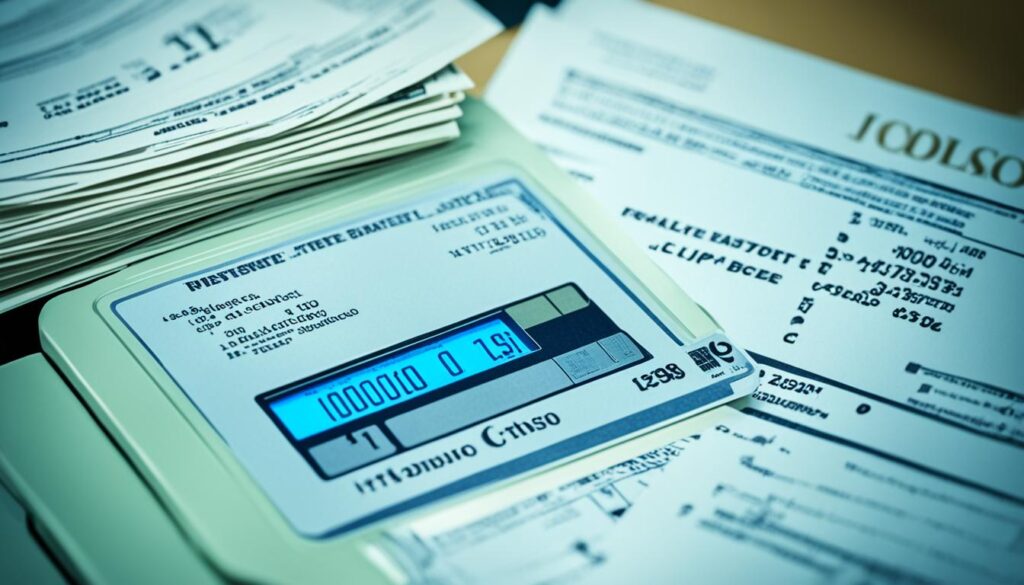Have you ever thought about starting an ATM business? ATMs are always around us, but we don’t always notice them. Yet, they are used by many daily. This guide shows how starting an ATM business can be a smart move. It not only provides a steady income but also offers a lot of potential. You’ll learn how easy it is to own and operate ATMs and turn it into a profitable venture.
Starting an ATM business can provide a steady income and doesn’t require a lot of work. It’s a good choice for those looking for a business they can run themselves. By placing ATMs in the right spots and learning about the market, you can be very successful. This guide will teach you everything you need to know, from researching the market to running your business effectively to make the most money in the industry.
To succeed, you need a good plan. This is true whether you’re starting from scratch or improving your current business model. Understanding the basics is key to making your ATM business last and be profitable.
Key Takeaways
- Knowing how to start an ATM business is essential for it to last and be successful.
- ATMs are a great business because they offer steady earnings and require little daily effort.
- It’s important to do market research and plan well to find good places for your ATMs.
- Your strategy for where and how to put your ATMs needs to be solid to beat the competition.
- Running your ATM business well is crucial for making more money and keeping customers happy.
- Getting your legal and financial bases sorted is necessary for your business to be trusted and last long.
If you use the advice in this guide, you’ll be well on your way to build a successful ATM business. One that not just meets the demand but exceeds expectations.
The Lucrative ATM Market and Its Growth Potential
The atm market is growing steadily, according to the newest atm industry statistics. Its growth is fueled by people’s need for easier banking and new tech. In 2020, the global ATM market showed it’s ready to expand more.
The CAGR, or annual growth rate, will increase in the future. This shows the potential for more growth in the atm market. Better technology and placing ATMs in busy spots are driving this growth.
In the U.S., many ATMs are not owned by big banks but by individuals. This offers a great chance for small business owners. Reports suggest that the money made from ATM fees is a big part of their income.
- People are using digital ways to bank more, which also helps the atm market grow.
- ATMs in places like hotels and shops show how the market is reaching new areas, making it more versatile.
New trends in the market are also contributing to growth. Features like contactless payments and better security make ATMs more popular and safe. This is bringing in more customers.
| Year | ATM Market Size | Annual Growth |
|---|---|---|
| 2020 | $21.9 Billion | 3.5% |
| 2021 | $22.7 Billion | 3.7% |
| 2022 | Estimated $23.5 Billion | Est. 4.0% |
| 2023 | Projected $24.3 Billion | Proj. 4.4% |
To sum up, the future of the atm market looks bright. New tech, good placements, and shifting customer needs will lead to big growth. This is great news for anyone thinking about joining the market.
How to Start an ATM Business
Starting an ATM business can be very rewarding if you start it right. You need to know what people want, find the best locations for ATM placement, and pick a smart business plan. This guide will walk you through these steps. It also covers the legal and finance sides of running an ATM business.
Understanding Market Demand and Location Analysis
To do well with your ATM business, you must know what people need. This means finding out who will use your ATMs and where they gather most. By looking at foot traffic and the area’s population, you can find the best places for ATMs. This approach will ensure your ATMs get used a lot and make money.

Choosing the Appropriate Business Model and Legal Structure
Picking the right business model for your ATM business is key. You might choose to run it all yourself or work with partners. Each way has its perks. Your choice should fit your goals and what you can handle. It’s also crucial to pick the right legal setup. You can go solo, partner up, or form an LLC. Your choice affects how the business runs and your money matters.
Financing Your ATM Business and Managing Funds
Getting enough money to start your ATM business is vital. You’ll need cash to buy ATMs and set them up. You can use your own savings, take out loans, or find investors. Once you’re up and running, keeping your finances in order is crucial. This ensures your ATMs are working well, which keeps your customers happy and your cash flow steady.
| ATM Model | Pros | Cons |
|---|---|---|
| Full-Service | Complete control over operations and customization. | Higher initial investment and management overhead. |
| Partnership | Reduced costs and shared responsibilities. | Potential profit sharing and dependency on partners. |
Securing Profitable ATM Placement Opportunities
To grow an ATM business, finding great atm placement opportunities is key. This means looking for atm locations that many people visit. It’s also about talking with the place owners to get a good deal.
Good spots for ATMs are places like convenience stores, gas stations, and casinos. These spots have a lot of people coming through who might need cash. This makes them perfect for putting ATMs.
- Convenience Stores: High foot traffic, regular need for small cash transactions.
- Gas Stations: Strategically important due to their access for commuters and travelers.
- Casinos and Bars: These locations benefit from cash-only transactions in many cases.
- Retail Stores: Provides a complementary service as shoppers often need cash.
After picking the right places, the next step is negotiating with location providers. You need to know what each side wants from the deal. Show how an ATM could bring more people and a share of the ATM fees.
“Negotiating with providers is not just about securing a spot; it’s about forging a partnership that benefits both parties.”
Remember, talking to providers is something you keep doing. Keeping a good relationship helps make things work well for everyone. Here’s how to approach these talks:
| Key Consideration | Suggestions |
|---|---|
| Contract Length | Opt for a medium-term contract that allows both parties to assess the profitability of the location. |
| Revenue Sharing | Propose a fair percentage split of ATM fee revenues that incentivizes the location provider without diluting your profits. |
| Operational Support | Assure the location provider of full technical and maintenance support for the ATM. |
Using these tips makes finding and securing good ATM spots strategic. This can help your business do well.

Navigating the Legal Landscape for ATM Operators
For those looking to start in the ATM world, knowing legal requirements is key. This keeps you from making costly mistakes and running smoothly. Being on top of licenses, registrations, and contracts is crucial for an ATM business to be trusted and successful.
Business Registration and Trademark Considerations
Getting your ATM business set up starts with the right registrations. Make sure you’re registered correctly with government agencies. This gives you the go-ahead to operate legally in your area. Also, think about protecting your business name and logo. This keeps your brand safe and unique, plus it helps avoid copying by others.
Licensing Requirements and Regulatory Compliance
Each area has its own rules for running ATMs, so it’s vital to know what’s required where you are. Beaing aware of and following these rules keep you safe from financial penalties or even having to close your business. Always stay updated on legal changes. It’s part of how to rightfully manage an ATM business.
Contractual Agreements with Location Providers
Good, solid contracts matter a lot in the ATM field, especially when dealing with where your ATMs will go. A good contract lays out what everyone can expect, and it helps prevent misunderstandings that could lead to problems. Working with clear agreements builds trust and keeping good business partnerships going.
For those starting as ATM operators, getting through the maze of laws is critical. By following the right steps, you not only protect your business but show you’re reliable and set for success.

| Requirement | Description | Necessity Level |
|---|---|---|
| Business Registration | Registration with state and federal bodies | Essential |
| Trademark | Protection of business identity and branding | Highly Recommended |
| Licensing | Compliance with local and national laws | Varies by location |
| Regulatory Compliance | Adherence to legal standards and ongoing updates | Critical |
| Contractual Agreements | Legal contracts with location providers | Essential |
ATM Operational Excellence: Best Practices
In the world of ATM operations, mastering practices like atm maintenance, cash management, and customer service makes a big difference. Doing so boosts ATM functionality and user satisfaction. Good strategies improve performance, reliability, and security, winning users’ trust and loyalty.
ATM Maintenance: Regular checks are key to keeping ATMs running smoothly. These checks prevent breakdowns that could stop service and harm trust. It’s vital to have service teams well-equipped and knowledgeable to ensure ATMs work well always.
Cash Management: Managing cash well prevents issues like shortage or too much cash, which degrade ATM service quality. Predictive analytics use past data and future needs to predict how much cash an ATM will need. This way, ATMs have the right amount of cash at all times.
Customer Service: Good customer service solves disputes and technical issues fast, keeping customers happy and loyal. Trained service reps who help users swiftly and effectively keep service quality high. This practice is key for user satisfaction.
Using advanced tech and sticking to operational rules makes a high-performing ATM network. Here’s a look at important ATM tasks and their effects:
| Operational Task | Goals | Expected Outcome |
|---|---|---|
| Maintenance Checks | Ensure ATM functionality and reliability | Reduced downtime and service disruptions |
| Cash Replenishment Cycle | Optimal cash availability | Meet customer demand without holding excess cash |
| Customer Issue Resolution | Quick and effective resolution of concerns | Increased customer satisfaction and loyalty |
Following these best practices needs a well-rounded effort. This includes understanding technology, engaging with customers, and sticking to maintenance plans. Such an approach ensures ATM networks meet and surpass what today’s consumers expect.
Maximizing Earnings: ATM Profitability Analysis
To make more money from ATMs, you must look closely at how they earn. This includes studying the fees they charge, managing costs well, and using smart strategies. It’s also key to make deals with others and offer special services to bring in more money and do better in the market.
Assessing Revenue Streams from Surcharge Fees
Charging extra, or surcharge fees, is a major way ATM owners make money. They figure out the right fee by studying how many transactions happen and what customers do. Looking at what other ATMs in the area charge, and listening to what customers say, helps with this.
Cost Management and Optimization Strategies
Keeping costs down is vital for making a profit with ATMs. This means sticking to a plan for fixing and updating the machines. It also includes using new tech to make transactions safer and quicker. Putting ATMs in spots where they’ll be used a lot can cut costs and bring more business.
Strategic Partnerships and Value-Added Services
Working closely with banks, stores, and others can lead to better places for the ATMs. This also means spending less to operate them. Adding services like topping up phones, paying bills, or selling tickets can bring in more customers. It makes those customers use the ATM more often.

| Optimization Strategy | Expected Impact |
|---|---|
| Energy-efficient ATMs | Reduces electricity costs by up to 30% |
| Enhanced surcharge fee model | Increases revenue per transaction |
| Strategic ATM placements | Boosts transaction volume by placing ATMs in high traffic areas |
| Partnerships with large retail chains | Secures premium locations at reduced costs |
Conclusion
This guide has covered the steps needed to start an ATM business. We’ve looked at key points needed for success. These include the market’s potential, finding good spots for ATMs, and legal issues.
Starting an ATM business can be a great choice for those wanting steady income and freedom in their work. The secrets to doing well are careful research, choosing the right spots, and running your business well. Focusing on these can boost your profits and keep your business going strong.
The ATM world keeps changing, so keeping up with new trends and tech is a must. We suggest being proactive from the start, and always being ready to learn. Hopefully, this guide will help kick off your successful journey into the ATM business.
